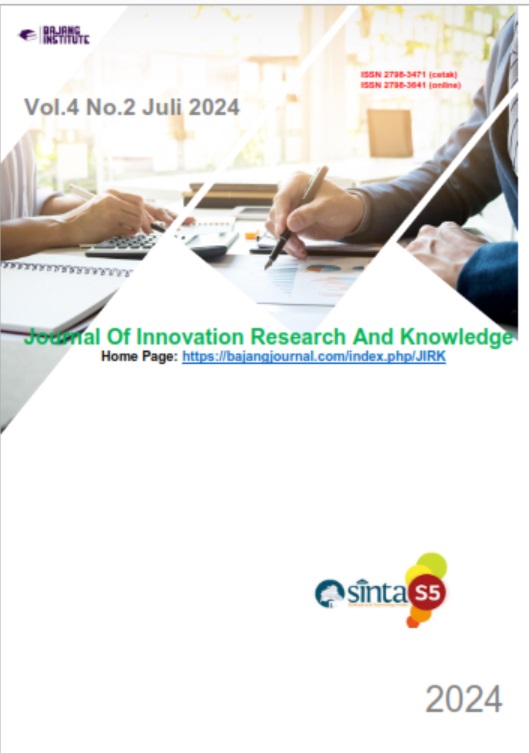AN ERROR ANALYSIS ON BROADCASTING STUDENTS’ MID-TERM TEST OF AKRB YOGYAKARTA
DOI:
https://doi.org/10.53625/jirk.v4i2.8078Keywords:
Error Analysis, Error Sources, Error TypesAbstract
This paper aims at analyzing errors made by the fourth semester students of Radya Binatama Communication Academy Yogyakarta. Analyzing students’ errors is necessary so that teachers can plan their suitable methods for the students hoping that the errors can be minimized significantly. The data were taken from 33 students attending English 1 Mid-Term Test of the Academic Year 2022/2023. One of the instructions in the test was to write about their unforgettable experience (recount text). This research used descriptive qualitative method. The data analysis technique used four steps: identifying, classifying, describing, and calculating. The errors were classified into two sources of error: interlingual and intralingual errors. Then, the errors were described into four types: misordering, addition, omission and misformation. The result showed from the total 178 errors, the most frequent source of errors was intralingual error: 139 errors (78,09%), interlingual error: 39 (21,91%). Based on the types of errors, misordering occurred 14 times (7,87%), addition 25 times (14,04%), omission 45 times (25,29%) and misformation 94 times (52,80%). These facts can be essentially used by the teacher to focus on what should be revised to improve the quality of teaching and learning significantly.
References
Parupalli Srinivas Rao, (2019), THE ROLE OF ENGLISH AS A GLOBAL LANGUAGE, Cosmos, Directory of Research Journal Indexing (DRJI) & Cosmos. Oray’s Publications Impact Factor: 4.845(SJIF), Www.Rjoe.Org.in An International Peer-Reviewed English Journal, vol. 4, www.rjoe.org.in.
Maureen Snow Andrade, (2009), “The Effects of English Language Proficiency on Adjustment to University Life,” International Multilingual Research Journal 3, no. 1: 16–34.
Noria Ghezzou and Sofiane Mammeri, (2016), INVESTIGATING INTRALINGUAL AND INTERLINGUAL ERRORS OF ALGERIAN MIDDLE SCHOOL EFL LEARNERS IN THEIR WRITTEN COMPOSITIONS: A CASE STUDY, The Buckingham Journal of Language and Linguistics, vol. 9.
Chittima Kaweera, (2013), “Writing Error: A Review of Interlingual and Intralingual Interference in EFL Context,” English Language Teaching 6, no. 7: 9–18.
Nurpita Sari, Fatchul Mu’in, and Moh Yamin, (2019). An Analysis of Intralingual Grammatical Errors Made Efl Students, Lingua Educatia Journal, vol. 1.
Resazia Angguni, (2020), INTERLINGUAL AND INTRALINGUAL ERRORS OF WRITING DESCRIPTIVE TEXT MADE BY THIRD SEMESTER STUDENTS OF ENGLISH EDUCATION DEPARTMENT SARJANAWIYATA TAMANSISWA UNIVERSITY YOGYAKARTA, Journal of English Language and Language Teaching (JELLT), vol. 4.
Nur Raissah and Zulfadli A. Aziz, (2020), AN INVESTIGATION OF INTERLINGUAL AND INTRALINGUAL INTERFERENCE FOUND IN ENGLISH AS A FOREIGN LANGUAGE (EFL) STUDENTS’ COMPOSITION OF RECOUNT TEXT.
Ahmed Khider Othman, (2017), “An Investigation of Interlingual and Intralingual Errors in Written Composition by Saudi EFL Students at the University of Tabuk,” British Journal of Humanities and Social Sciences 18, no. 2.
Vicente S Esmalde, (2018), “Licensed Under Creative Commons Attribution CC BY Surface Strategy Taxonomy in Error Analysis: Basis for Grammatical Competence Enhancement Program (GCEP) International Journal of Science and Research 9, https://www.researchgate.net/publication/365854011.
Creswell John W., J David Creswell. (2018). "Research Design” London: SAGE Publications Ltd.













